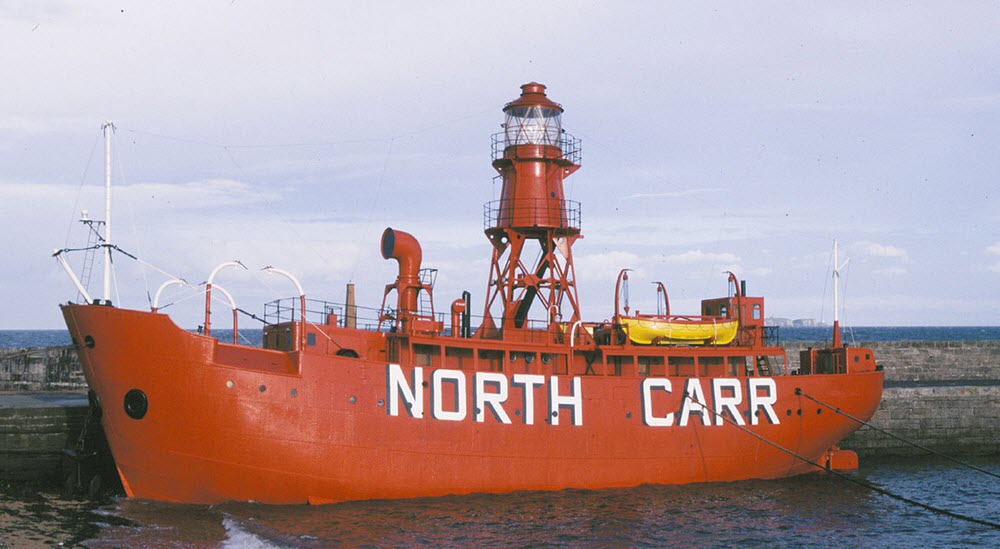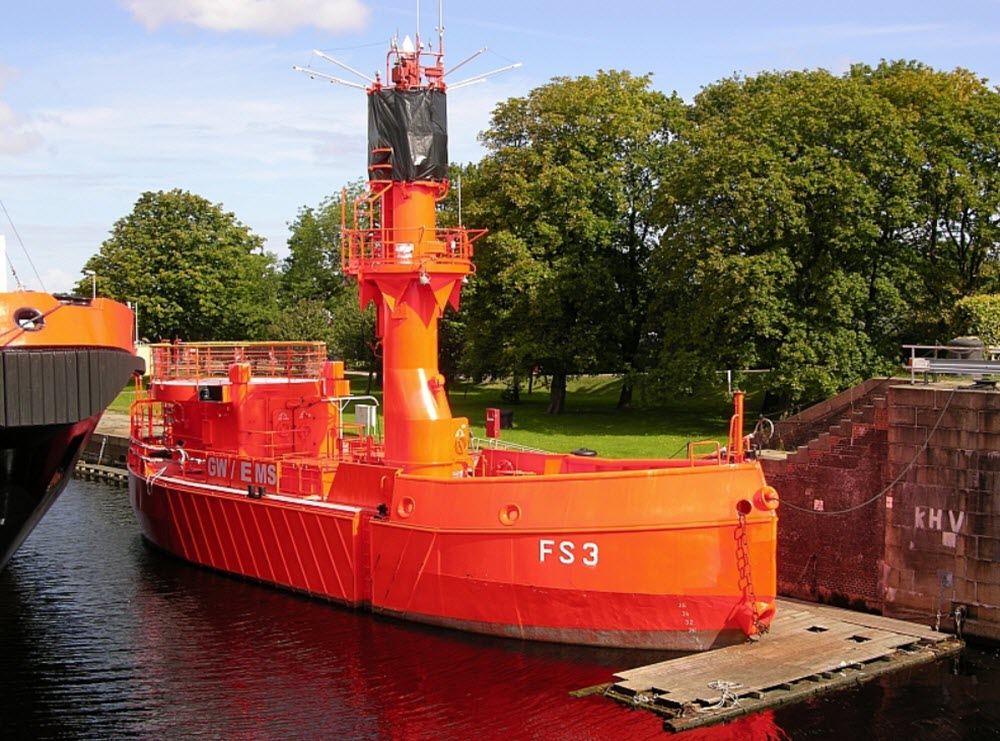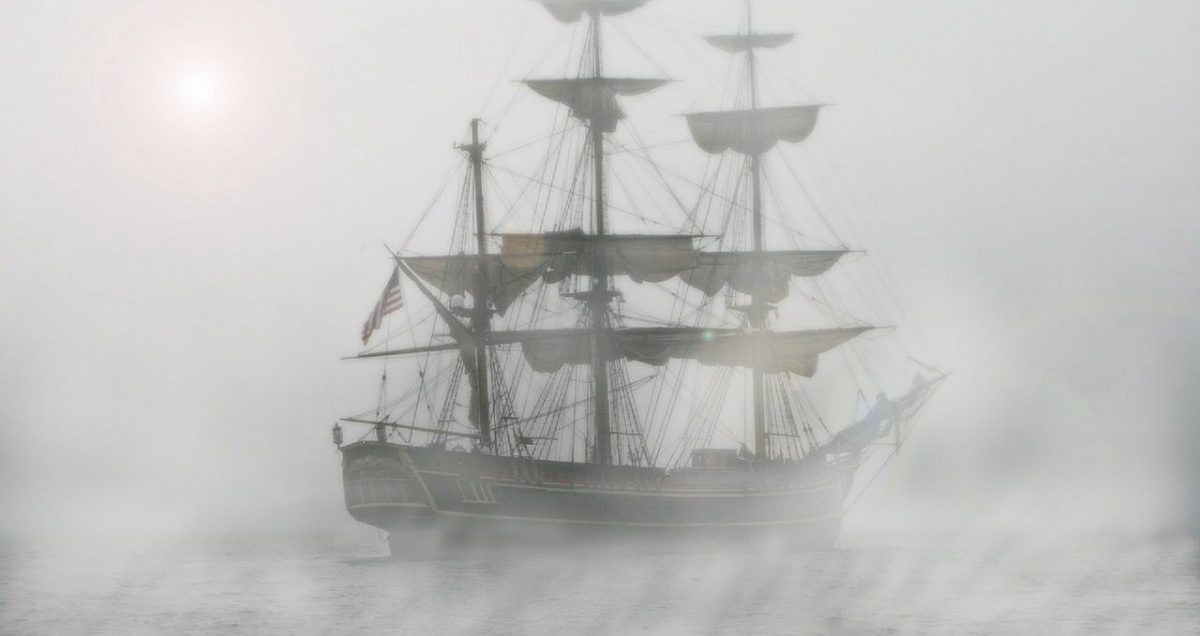Contents
A lightvessel, also known as a lightship, is a ship that functions as a lighthouse, guiding those who travel on the water. Lightvessels are typically used in places where building a lighthouse isn’t feasible, e.g. because the water is too deep.

The Nore Lightvessel
The first modern-era record of a lightvessel is from 1732, although the basic idea is much older. Even the ancient Romans would sometimes light beacons onboard ships to create a lightvessel. The 1732 lightvessel was placed off the Nore sandbank in England, just at the mouth of the Thames Estuary, where the River Thames reaches the North Sea. This sandbank was a major hazard for the many ships travelling in and out of London, which is why the inventor Robert Hamblin decided to moor a vessel there and have a light warn ship pilots of the danger.
The experiment proved successful and Hamblin patented the idea. A second lightvessel was placed off Norfolk in 1736, followed by one at Ower Bank in 1788 and one at Goodwin Sands in 1793. By 1819, there were nine lightvessels in English waters.
Despite being commonly referred to as The Nore Lightship, the early succession of vessels moored at Nore were boats rather than big ships. Typically, small wooden Dutch-built galliots were selected for the job. It wasn’t until the late 1800s that a larger ship was moored here, and this was also when a revolving light was installed.
Nowadays, there is no lightvessel at Nore, just a buoy (Sea Reach No. 1 Buoy).
The Chesapeake Bay lightvessel
The first lightvessel in the United States was the one placed in Chesapeake Bay in 1820. This bay is is an estuary in the states of Maryland and Virginia.
By 1909, there were 56 lightvessels active along the U.S. coasts. After that peak, the number of lightvessels began to decrease, partly because improvements in engineering meant that they could be replaced with lighthouses.
The crew
Traditional lightvessels would typically have a crew onboard, who performed a multitude of tasks, such as:
- Maintaining the light
- Keeping records of passing vessels
- Making weather observations
- Perform rescue missions
Mooring a lightvessel

Naturally, it is very important that a lightvessel is moored properly, since it will be used as a fixed point for navigation and can not be allowed to move away from its original position. Also, a lightvessel must be in place in all kinds of weather, and can’t seek shelter in the harbour simply because a storm is on its way.
Early lightvessels typically utilized fluke anchors, but they were not very good at keeping the vessels stationary in rough seas since fluke anchors are prone to dragging. In the early 1800s, permanent mushroom anchors became more popular for lightvessels in English waters, especially where the seabed consisted of silt or fine sand. The mushroom anchor was invented by the famous lighthouse architect Robert Stevenson, and was first used for an 82-ton converted fishing boat used as a lightvessel at Bell Rock in 1807-1810 while a lighthouse was being constructed nearby. The mushroom anchor used for this boat weighed 1.5 ton.
In the 1820s, the effectiveness of the mushroom anchors was improved dramatically by the introduction of cast iron anchor chains.
The hull
The first English lightvessels were wooden boats sporting a standard hull, and these hulls were far from ideal for a vessel that was to be permanently anchored in one spot. Eventually, boats with specially designed hulls became the norm for lightvessels – hulls designed to reduce the rolling and pounding.
The light
The light is of course an essential part of the lightvessel, and it is important that it is mounted at a sufficient altitude. Some lightships have two masts for this purpose: one for the main beacon and one for a reserve beacon.
Typically, the light of a lightvessel is turned on one hour before sunset and kept on until one hour after sunrise, but it will also be turned on during fog and similar conditions.
On early English lightvessels, oil lamps were run up the mast, and then lowered again as they needed servicing. Later on, fixed lamps became more common, and they needed to be serviced in place.
As Fresnel lenses became standard for lighthouses, they were installed on lightvessels as well. A Fresnel lens – invented by the French physicist Augstin-Jean Fresnel – can have a large aperture and short focal length without being overly big and heavy. It was invented specifically for lighthouses and makes it possible to capture more oblique light from a light source and allow it to be visible over greater distances (compared to what’s possible with a conventional lens).
Day markers
In addition to the light, early English lightvessels were equipped with day markers to make them extra visible and distinguishable during the day. These markers were placed at the top of the masts. Red was the standard colour, but there are also reports of white markers being used. The exact designed varied, and a day marker could for instance be a filled circle or a pair of inverted cones.
Later on, it became common to paint the whole hull of the lightvessel bright red to make it more visible from a distance. Typically, the name of the station would be painted on in big upper-case letters using bright white paint.
One notable exception from the other side of the Atlantic is the United States Lightship Huron which had its port side painted black, because it was assigned the black buoy side of the entrance to the Lake Huron Cut. Also, the lightvessel used at Minots Ledge in Massachusetts in 1854-1860 was painted yellow to become more visible against a backdrop of green hills.
Sounds
Many lightvessels can emit sounds to notify approaching traffic of their presence, a capacity that is especially important when its foggy. This trend started in the early 1900s when some lightvessels were fitted with warning bells, either on the vessel itself or lowered into the nearby water.
By conducting a series of tests, Trinity House found out that sounds from a bell submerged in 18 feet of water could be heard 15 miles away.
